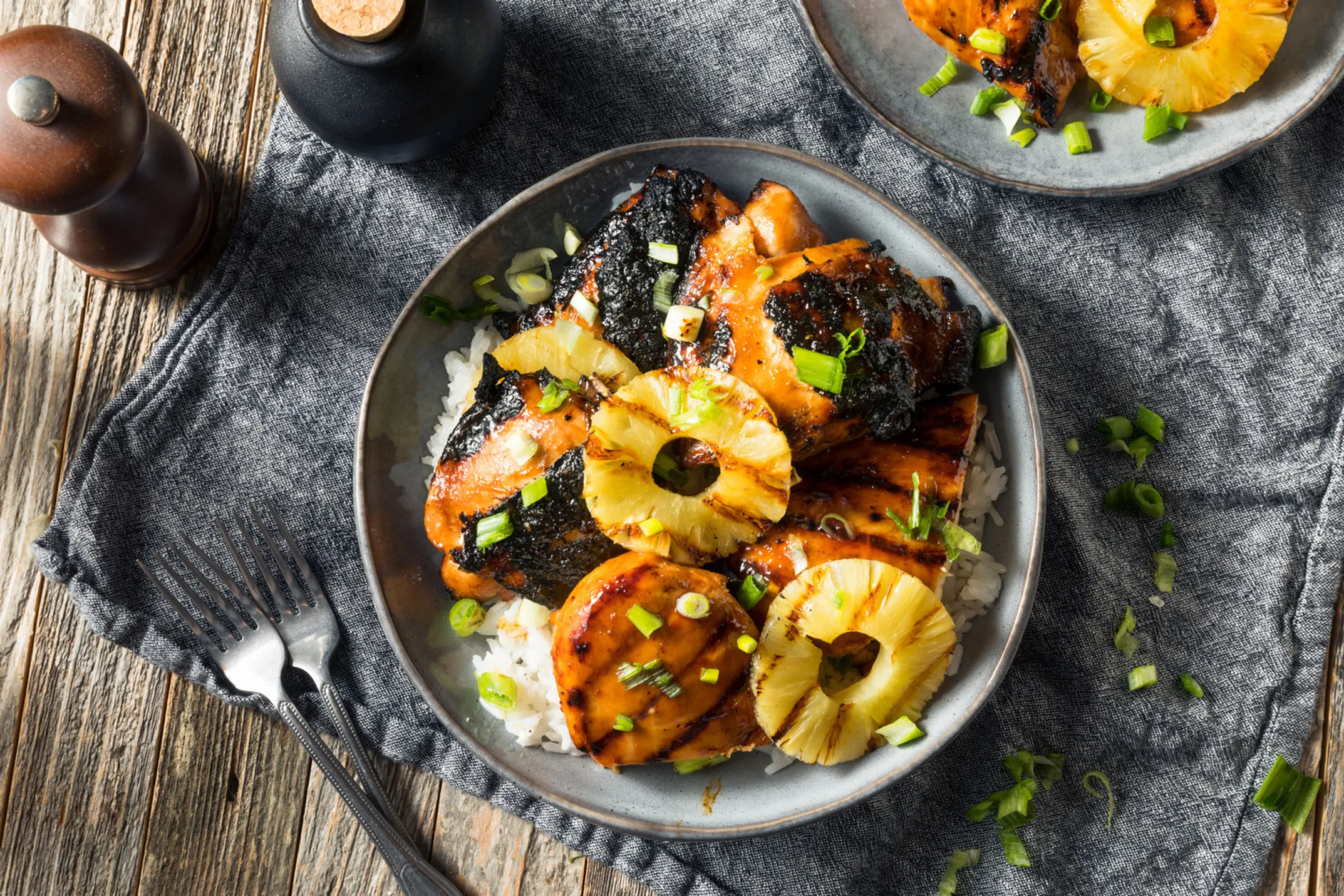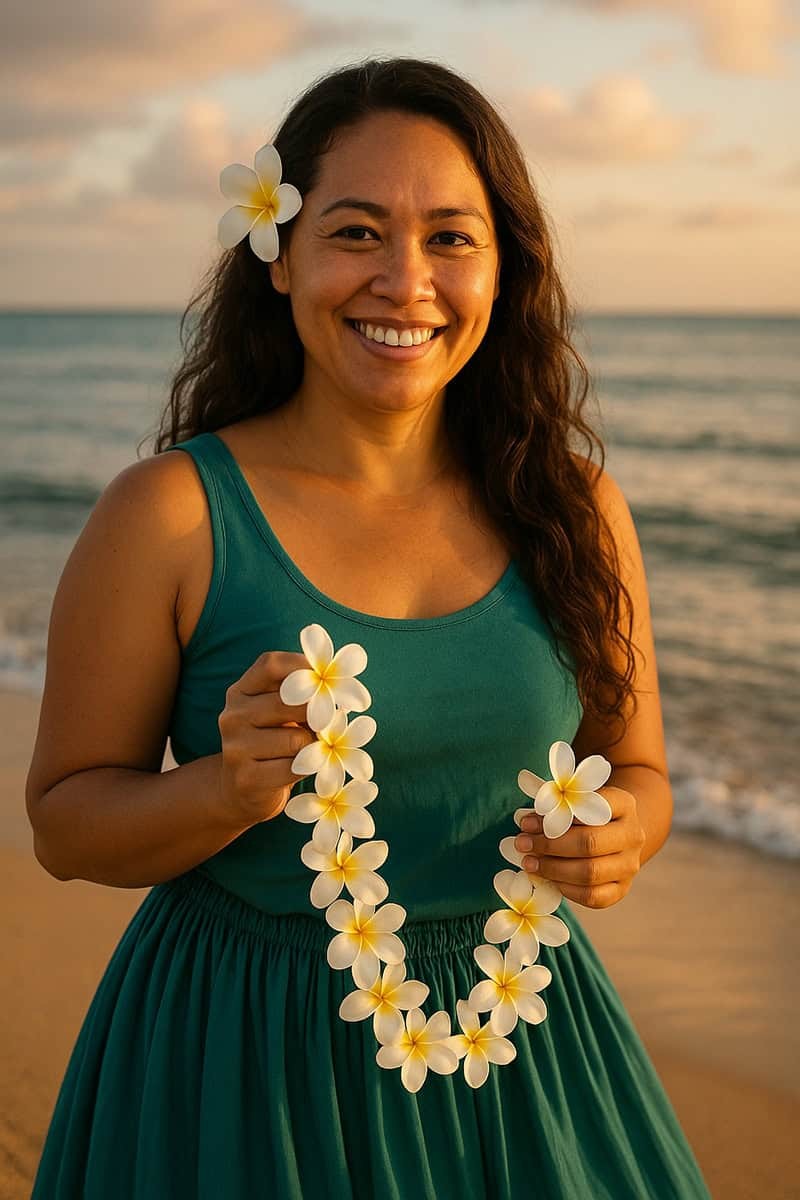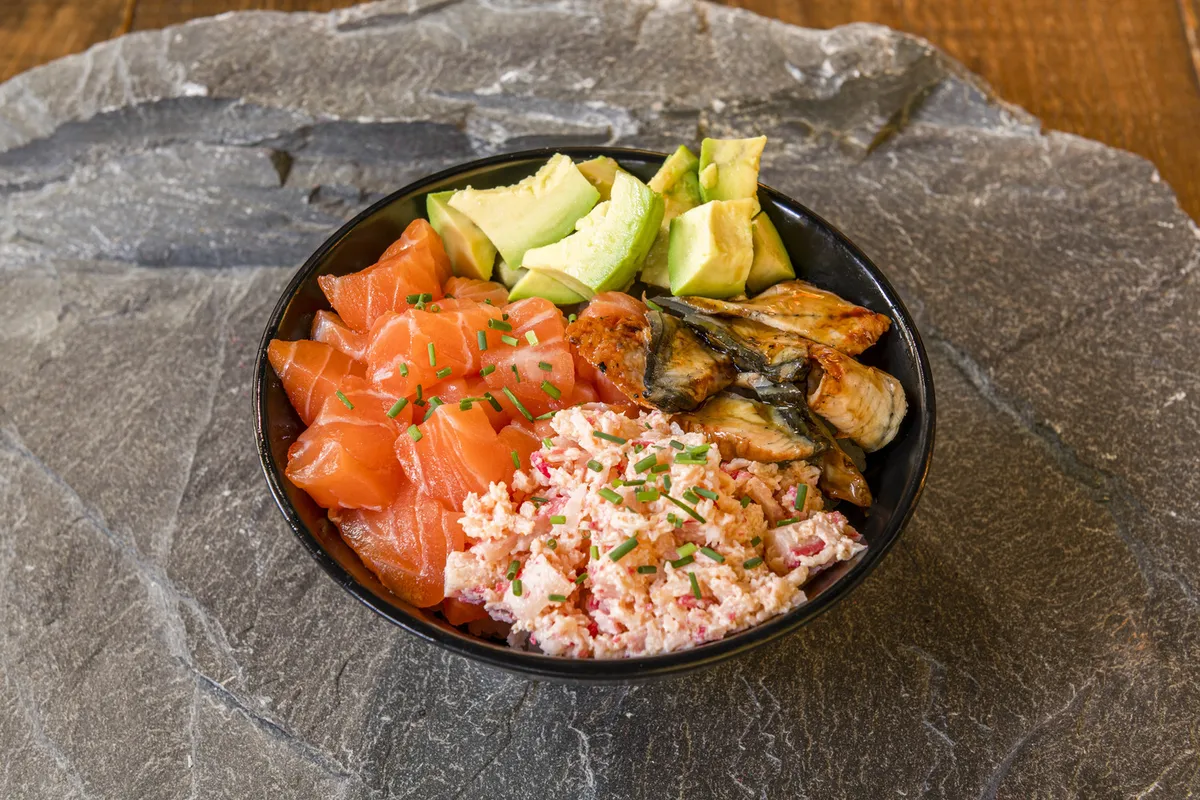

Your O'ahu Culinary Adventure
Experience Hawaiian Regional Cuisine through history, adventure, and world-class dining

Written by a Cultural Practitioner
Leilani AkoA Complete Day of Culinary Culture
To truly appreciate O'ahu's food culture, experience its history, embrace adventure, and savor incredible meals. This one-day itinerary connects pivotal moments of the past with today's culinary scene, creating a complete understanding of what makes Hawaiian cuisine so special.
This isn't just a food tour—it's a journey through time that shows how historical events, cultural fusion, and modern innovation created the unique flavors you'll taste today. Each stop builds on the last, creating a complete story you can taste and experience.
This meal concludes your day exploring O'ahu's soul—a flavorful connection to land, history, and people. Understanding how historical events shaped local food culture makes every meal more meaningful.
Morning: Pearl Harbor History (8:00 AM - 12:00 PM)
Start at Pearl Harbor, a site of profound significance. The December 7, 1941 attack changed everything—including Hawai'i's food landscape. The massive military influx during World War II made canned goods like Spam dietary staples. Local culture transformed these necessities into beloved foods like Spam musubi.
Various tours are available. The essential experience includes the boat trip to the USS Arizona Memorial honoring 1,177 lost crewmen. For comprehensive understanding, consider the "Complete Pearl Harbor Experience" with the Battleship Missouri, USS Bowfin Submarine Museum, and Pearl Harbor Aviation Museum.
⚓️ Historical Context
Military personnel brought new foods and eating habits. Mess halls introduced institutional cooking. PX stores stocked different products that locals adapted.
🥫️ Culinary Connection
Locals adapted military surplus with local ingredients. They took canned meat and made it special, creating new dishes that reflected their changing world.
Afternoon: Coral Crater Adventure (1:00 PM - 5:00 PM)
After morning reflection, embrace the island's adventurous spirit. Coral Crater Adventure Park offers thrilling activities in a unique geological setting. The signature Zipline Tour sends you soaring through jungle canopy on six lines ranging from 300 to 900 feet. You'll see O'ahu from a completely different perspective.
Zipline Tour
Six lines through jungle canopy, 300-900 feet long. See O'ahu from a bird's eye view in this unique crater setting.
Off-Road ATV
Explore crater trails in powerful vehicles through tropical forest. Challenging but accessible terrain.
Adventure Tower
18 aerial obstacles, climbing wall, and 50-foot freefall. Adult jungle gym testing courage and agility.
Adventure activities connect you to the land in a physical way. You'll appreciate O'ahu's natural beauty while challenging yourself. It's the perfect preparation for an evening of amazing food, working up an appetite worthy of a Hawaiian feast.
Evening: HRC Legacy Dining (6:00 PM - 10:00 PM)
Cap your day with dinner embodying the 1991 revolution and its modern evolution. Choose from these exceptional restaurants that represent different aspects of Hawaiian Regional Cuisine's legacy and future.

Modern Hawaiian cuisine: fresh poke bowls like this showcase the quality and innovation you'll experience during your O'ahu culinary adventure
Roy's Waikiki - Original Master
Taste Roy Yamaguchi's "Hawaii Inspired, Internationally Influenced" dishes that helped globalize HRC. Try his signature misoyaki butterfish or any preparation featuring local fish. The flavors are bold but balanced, showcasing how Asian techniques enhance local ingredients.
Upscale but welcoming atmosphere. Staff knows the stories behind the dishes. You're experiencing culinary history.
MW Restaurant - New Generation
Wade and Michelle Ueoka's refined creations carry Alan Wong's legacy. Wade's savory dishes might include Mochi-Crusted Kampachi or locally sourced beef preparations. Michelle's desserts play with local flavors like haupia, lilikoi, and chocolate.
Modern Hawaiian hospitality at its best. Comfortable but sophisticated, professional but warm.
Mud Hen Water - Sustainability Focus
Ed Kenney showcases deep local sourcing commitment. Menu changes based on what's available from local farms. You might find 'ulu gnocchi, local greens, or creative preparations of traditional Hawaiian ingredients.
Represents HRC's evolution toward sustainability and cultural awareness, working with Hawaiian cultural practitioners.
Koko Head Cafe - Casual Innovation
Lee Anne Wong reimagines local breakfast and brunch dishes. Her cornflake French toast is legendary. The katsu fried chicken and waffles perfectly captures local flavors in creative presentations.
Casual but equally delicious experience. Perfect for those wanting innovation without formality.
🗺️ Regional Cuisine Guide
⏰ Day Timeline
- 8:00 AM - 12:00 PM Pearl Harbor History
- 1:00 PM - 5:00 PM Coral Crater Adventure
- 6:00 PM - 10:00 PM HRC Legacy Dining
💰 Budget Guide
- Pearl Harbor: $25-89 pp
- Coral Crater: $49-199 pp
- Fine Dining: $75-200 pp
- Transportation: $30-80 pp
- Total Range: $179-568 pp
💡 Pro Tips
Book tickets online in advance
Bring change of clothes
Make reservations early
Extended Culinary Experiences
If you have more time, consider these additional O'ahu food experiences that deepen your understanding of Hawaiian Regional Cuisine and local food culture:
Chinatown Food Tour
Explore Honolulu's historic Chinatown with its markets, restaurants, and food vendors. Try dim sum, Vietnamese pho, Filipino desserts, and local snacks.
Learn about the immigrant communities that shaped local food culture.
KCC Farmers' Market
Saturday mornings in Kaimuki offer the best selection of local produce. Meet farmers, taste exotic fruits, buy local coffee.
Vendors serve prepared foods showcasing local ingredients.
Food Truck Adventure
O'ahu has incredible food trucks. Giovanni's started the shrimp truck phenomenon. Aloha Plate serves traditional Hawaiian plates.
Seoul Mix offers Korean-local fusion representing modern trends.
Cooking Classes
Learn hands-on techniques featuring local ingredients. Make poke, poi, or modern Hawaiian dishes.
Take home recipes and new skills to recreate Hawaiian flavors.
Conclusion: The Enduring Spirit of Aloha on the Plate
Hawaiian cuisine tells a rich story stretching from ancient ahupua'a wisdom to today's innovative kitchens. It's about resilience, adaptation, and profound respect for the 'āina.
From sacred kalo and smoky imu depths, the cuisine absorbed plantation-era diversity, creating beloved "local food." This set the stage for 1991's revolution when twelve chefs declared Hawaiian food deserved world recognition.
Their success transformed how people think about Hawaiian cuisine. No longer seen as simple island fare, it's recognized as sophisticated, innovative cooking that celebrates cultural diversity while honoring the land.
Today their legacy thrives. New chefs continue innovating while deepening sustainability commitment—a modern echo of ancient mālama 'āina. They work with farmers to revive heritage crops. They partner with fishermen to source sustainably. They teach others to respect the ingredients and the culture they represent.
The movement extends beyond restaurants. Schools teach children about local agriculture. Community gardens connect neighborhoods through shared growing. Food festivals celebrate the connection between place and plate.
To eat in Hawai'i is to taste this entire history on one plate. It's participating in living culture that constantly changes yet stays forever rooted in the land. Every dish tells multiple stories—of the people who first cultivated these islands, of immigrants who brought new flavors, of chefs who refused to accept mediocrity.
But Hawaiian cuisine isn't stuck in the past. It's constantly growing. Young chefs bring fresh perspectives while honoring traditions. New restaurants open featuring innovative approaches to local ingredients. Food trucks experiment with fusion flavors that would have shocked previous generations.
The sustainability movement adds urgency to local sourcing. Climate change makes food security more important. Supporting local farmers isn't just about fresher ingredients—it's about survival.
Hawaiian cuisine also influences global food trends. Poke bowls appear in mainland cities. Chefs worldwide adopt Hawaiian techniques. The fusion approach pioneered here inspires cooks everywhere.
But the real magic happens when you experience it yourself. When you taste poi made from kalo grown in traditional patches. When you eat fish caught that morning from pristine waters. When you share a plate lunch with new friends who become 'ohana.
Food is the universal language of hospitality. In Hawai'i, that hospitality comes with extra meaning. Aloha isn't just a greeting—it's a way of life that includes sharing what you have with others.
The future of Hawaiian cuisine looks bright. Young farmers are returning to the land. New restaurants open regularly featuring local ingredients. Food festivals grow bigger each year. Cooking schools teach traditional techniques alongside modern methods.
But the most important element remains unchanged: the connection between people, food, and place. That's what makes Hawaiian cuisine special. It's not just about recipes or techniques—it's about relationships.
When you eat local food in Hawai'i, you're supporting farmers, fishermen, and food producers who care about the land. You're participating in an economy that values sustainability over profit. You're helping preserve cultural traditions while encouraging innovation.
You're also experiencing something delicious. Because at the end of the day, all the history and culture and sustainability don't matter if the food isn't good. Fortunately, Hawaiian cuisine is amazing. The combination of incredible ingredients, diverse influences, and passionate cooks creates flavors you can't find anywhere else.
A Living Tradition: How You Can Be Part of the Story
Hawaiian cuisine isn't a museum piece. It's alive and growing. Every person who chooses local ingredients over imported ones helps write the next chapter. Every visitor who seeks out authentic experiences instead of tourist traps supports local culture. Every chef who respects traditional methods while creating new dishes adds to the legacy.
You don't have to be a professional chef to participate. Home cooks can learn traditional techniques. Gardeners can grow heritage plants. Travelers can choose restaurants that source locally. Everyone can practice the values that make Hawaiian cuisine special.
Support Local:
Visit farmers' markets. Buy locally grown produce. Ask restaurants about their sourcing.
Learn Traditional Methods:
Take cooking classes. Visit cultural centers. Ask kupuna to share knowledge.
Practice Sustainability:
Reduce food waste. Choose reef-safe products. Support environmentally conscious businesses.
Respect the Culture:
Learn proper pronunciation. Understand cultural significance. Approach with humility and appreciation.
The story of Hawaiian cuisine continues with each meal prepared with aloha, each ingredient sourced with respect, each tradition passed to the next generation. It's a story we all write together, one plate at a time.
From the ancient Polynesian voyagers who brought the first food plants to these shores, to the plantation workers who created "local food" through necessity and creativity, to the visionary chefs who launched Hawaiian Regional Cuisine, to today's farmers and cooks who carry the tradition forward—everyone has played a part in creating this unique culinary culture.
Now it's your turn to taste, learn, share, and contribute to this ongoing story. Welcome to the table. Welcome to the 'ohana. Welcome to the incredible, ever-changing, always delicious world of Hawaiian cuisine.
So come hungry. Come curious.
Come ready to taste the soul of the islands on every plate.
Mahalo for joining me on this culinary journey.
From my 'ohana to yours, welcome to the table.
Until we meet again on the beach or at the farmers' market—a hui hou!

